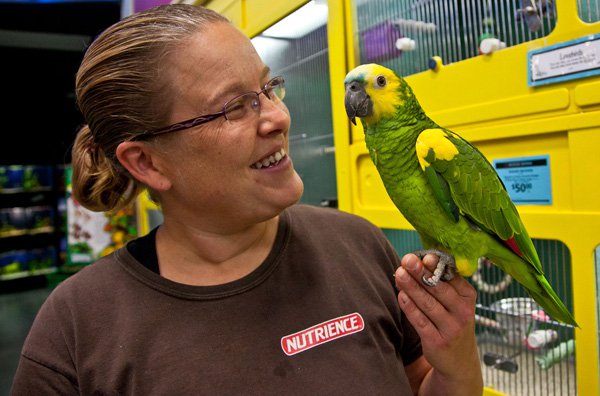
Many people who have older dogs may see that their canine is showing dog osteoarthritis symptoms. Arthritis effects the joints and causes pain and inflammation. This can be a crippling condition for the dog and, in later stages, may even cause the dog to be immobile. There are many available treatments and therapy options for a dog that suffers from arthritis. Some dog breeds are more susceptible to getting this condition because of body mass vs. leg length. Overweight dogs are especially at risk for getting osteoarthritis in their joints.
There are many forms of canine arthritis that effect different areas of the dog's body. There are conditions where the spine is effected, however, osteoarthritis of the knees and feet are most common in dogs. Many people may not be able to tell if the dog is in pain from arthritis since they can not properly convey their feelings to their owners. However, if your dog has suddenly stopped participating in his once-favorite activities, your dog may be suffering with osteoarthritis. Many older dogs have this condition and properly diagnosing it will help extend the life of your dog.
Other dog joint disease symptoms would include showing pain when the joint is touched, a change in personality and eating habits, and limping. Many dogs who have painful joint disease will often stay in the same spot for long periods of time and not engage in any exercise or activities. Your dog might even whimper at times when the pain from the osteoarthritis gets bad. If your dog is showing any of these common signs of joint disease, be sure to take him to a reputable veterinarian for a checkup.
During the veterinarian stay, your dog will have a physical examination as well as having x-rays taken of the joint in question. Many veterinarians will lay several treatment options down on the table for you to choose. The most commonly used treatment method is physical therapy and routine, gentle exercise. More severe treatment options would include surgery that replaces the joint. Some veterinarians will also prescribe supplements that help to fortify the dog's bones and ease joint disease symptoms.
There are also many other adjustments you can make to help ease the pain your dog feels from his joint pain. Keeping his food and water dishes at an accessible height is one such accommodation that will help your dog adjust. Ramps can help your dog climb stairs more easily. Alternatively, you may want to keep your dog's food, water, and bed downstairs so that climbing the stairs is not even an option. Make sure your dog has a comfortable dog bed to rest on at night. And while dog arthritis symptoms can be painful for your dog, making their life and movements easier will help your dog to feel better.
Visit Steve's site, Cactus Canyon, and learn more dog osteoarthritis joint disease.
 A Guide to Healthy Pets:7 Must-Haves for Your Dogs
A Guide to Healthy Pets:7 Must-Haves for Your Dogs
 8 Great Holiday Destinations For Cat Lovers
8 Great Holiday Destinations For Cat Lovers
 Choose the best horse accessories to enjoy the riding
Choose the best horse accessories to enjoy the riding
 Seven Warning Signs Of Illness To Watch Out For In Young Puppies
Seven Warning Signs Of Illness To Watch Out For In Young Puppies
 Ragwort – What Every Horse Owner Should Know
Ragwort – What Every Horse Owner Should Know
 Complete sinking water food spirulina wafers best for aquarium fishes
Complete sinking water food spirulina wafers best for aquarium fishes
 Omphalitis - A Condition That Affects Chicks
Omphalitis - A Co
Omphalitis - A Condition That Affects Chicks
Omphalitis - A Co
 Canine Eye Problems Commonly Confused With Cataracts
Canine Eye Proble
Canine Eye Problems Commonly Confused With Cataracts
Canine Eye Proble
 Get Animal Help from Gofundme to Raise Funds to Pay Pet's Medical Bills
Get Animal Help from Gofundme to Raise Funds to Pay Pet�
Get Animal Help from Gofundme to Raise Funds to Pay Pet's Medical Bills
Get Animal Help from Gofundme to Raise Funds to Pay Pet�
 Why Do Cats Love Boxes So Much?
Why Do Cats Love
Why Do Cats Love Boxes So Much?
Why Do Cats Love
 Peta Kills Animals Yet Pretends To Protect Them
PETA (People for Ethical Treatment of Animals) is an int
Peta Kills Animals Yet Pretends To Protect Them
PETA (People for Ethical Treatment of Animals) is an int
Copyright © 2005-2016 Pet Information All Rights Reserved
Contact us: www162date@outlook.com